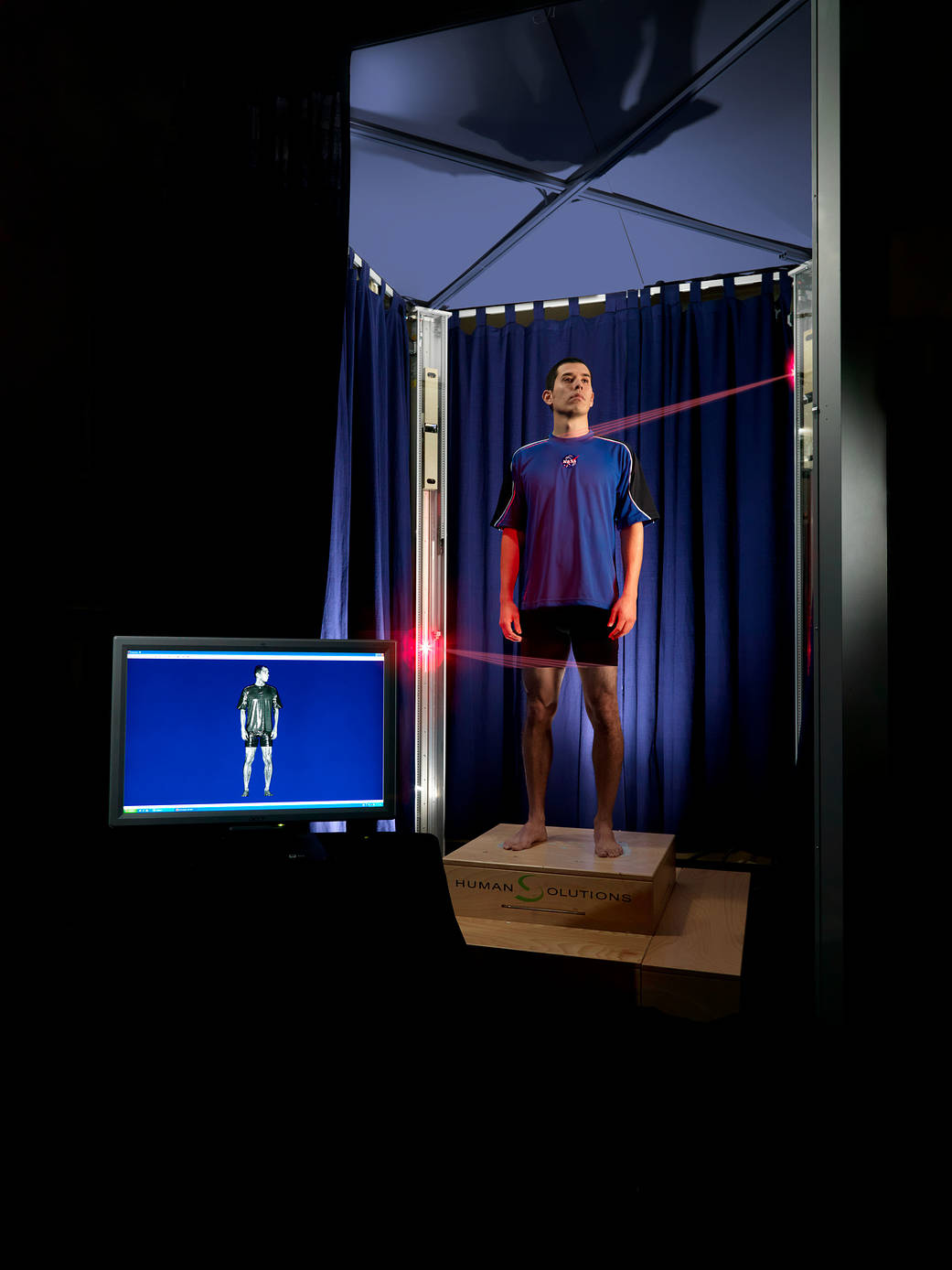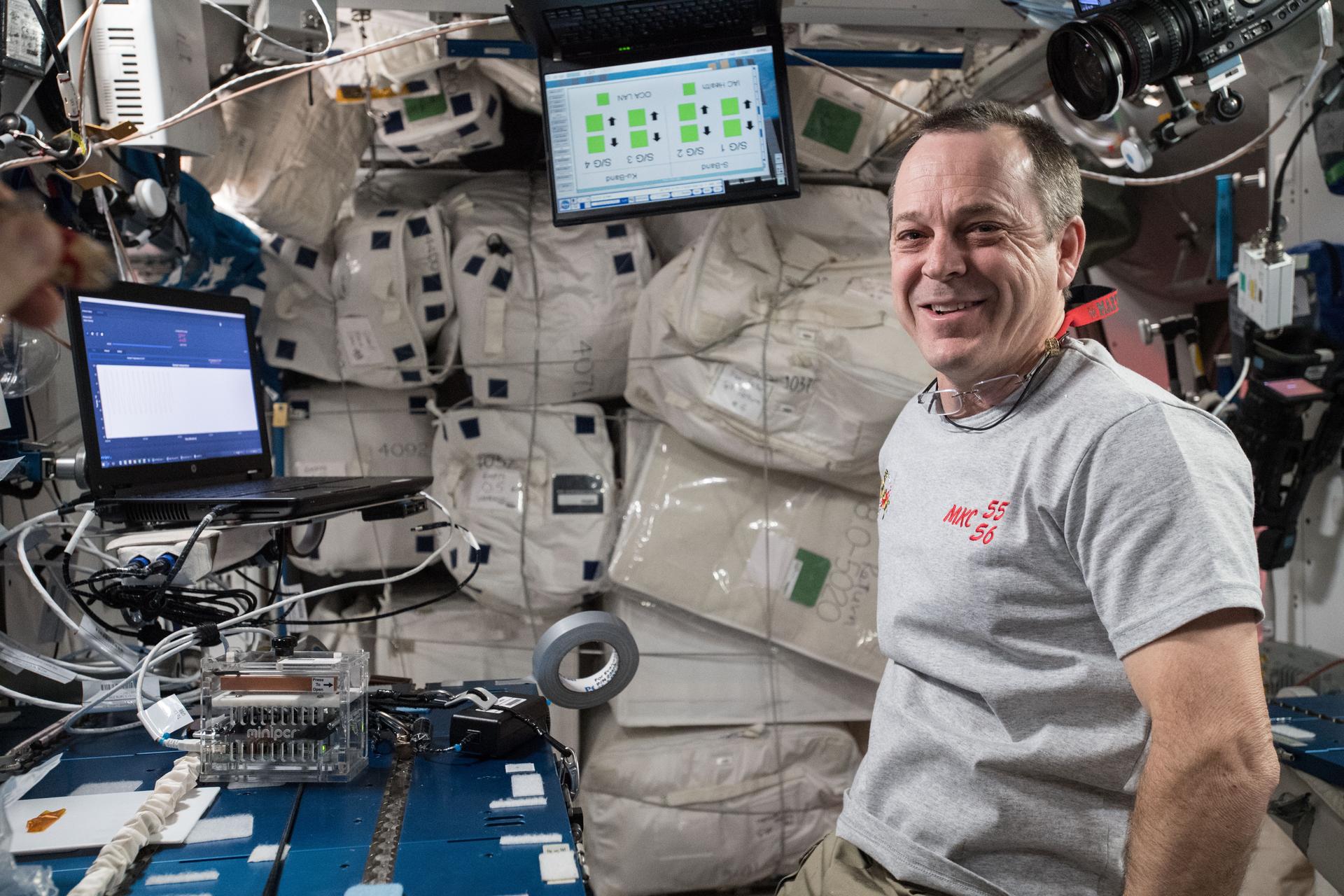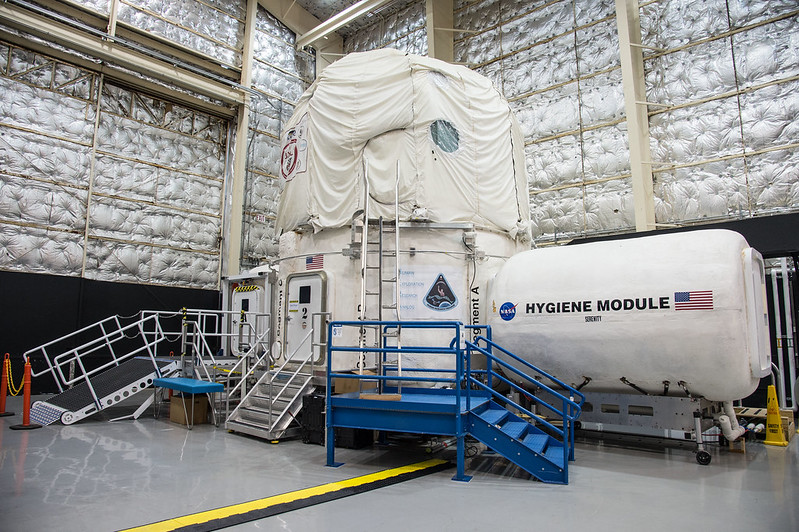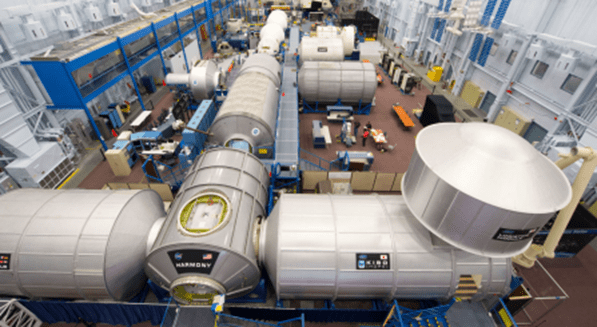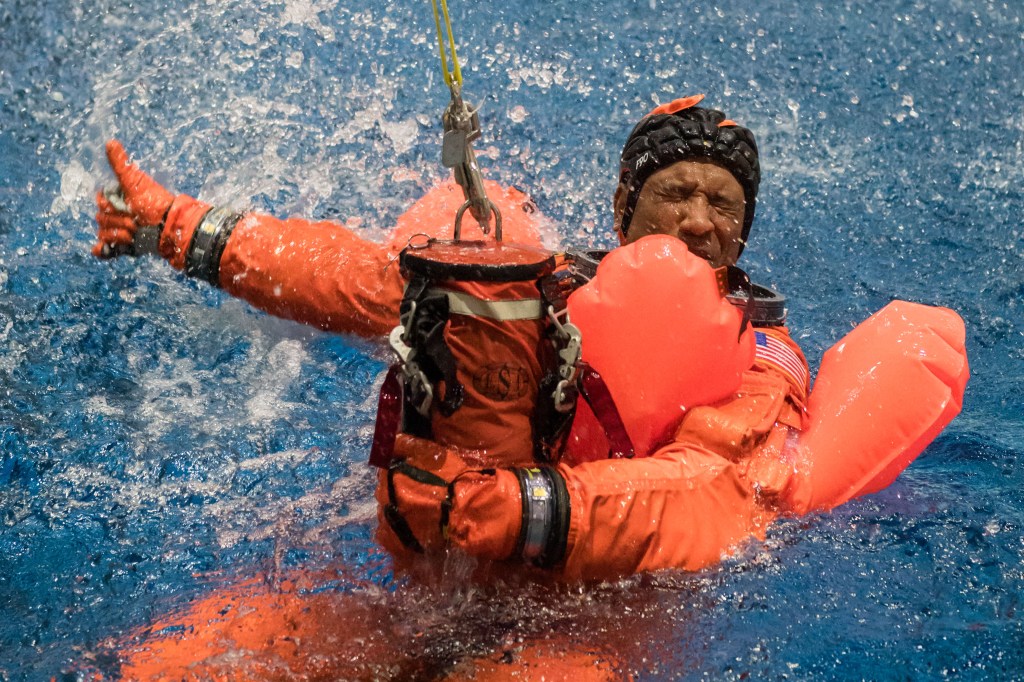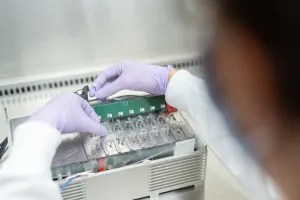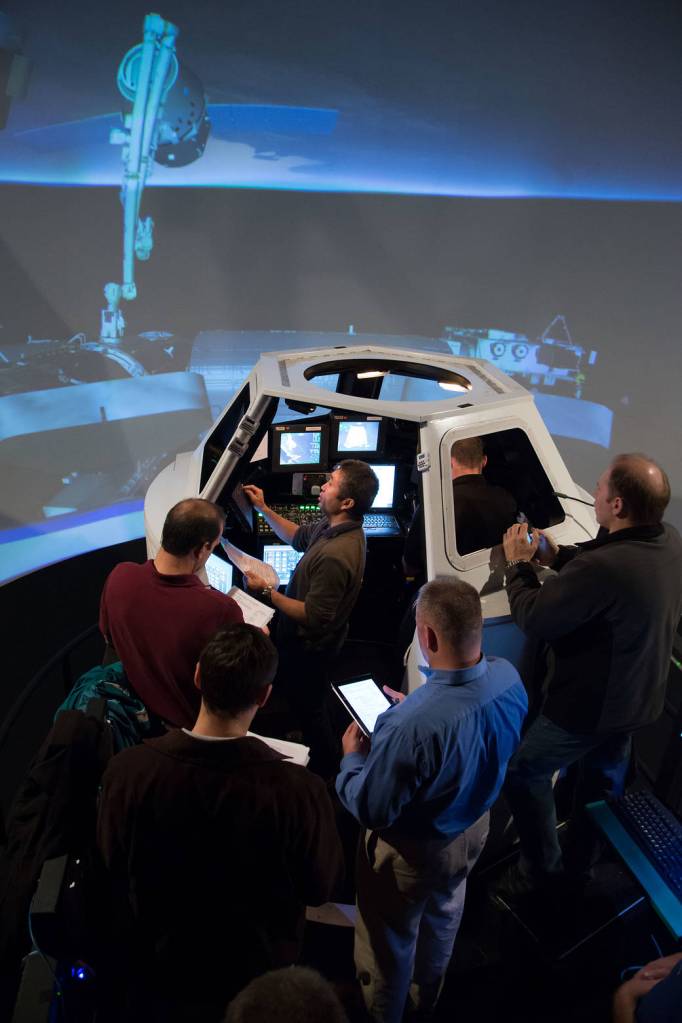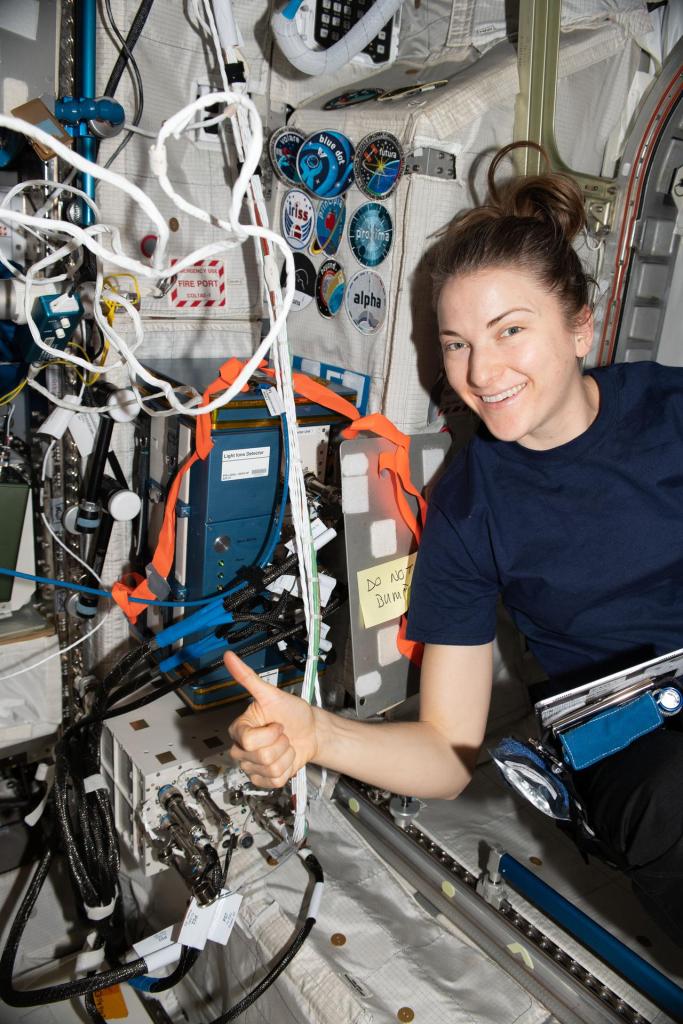Human Research Laboratories

Contents
Introduction
NASA Johnson Space Center (JSC) offers a diverse array of human research laboratories to advance space exploration and astronaut health. The Center’s human research laboratories cover a broad spectrum of human research aspects, including biomechanics, biostatistics, cardiovascular, bone and mineral and neuroscience. From microbiology and radiation analysis to decompression sickness mitigation and analog missions, NASA JSC’s capabilities are pivotal for advancing human space exploration and ensuring the success of future missions.
We invite collaborators to join forces with us, leveraging our extensive and diverse capabilities in human research to pioneer groundbreaking advancements in space exploration and astronaut well-being.
Human Research Laboratories
Anthropometry and Biomechanics
Overview | The Anthropometry and Biomechanics Facility (ABF) is uniquely equipped to conduct a variety of biomechanics and ergonomics research studies that investigate issues humans will encounter while living, working, and exploring in space. ABF personnel provides anthropometry and biomechanical analysis and evaluation expertise to multiple groups across the NASA community, including the Extravehicular Activity Projects Office, the Commercial Crew Program, and other internal and external organizations.
Details |
- Providing 3D whole body volumetric analysis and human modeling
- Performing work volume and reach assessments, load analysis
- Evaluating unsuited and suited locomotion in reduced gravity environments
- Performing space suit modeling
- Performing Extravehicular Activities and Intravehicular Activities evaluations
- Developing Biomechanical analyses using motion capture and force platforms in the lab, in suits, and other facilities (i.e., JSC’s ARGOS, NBL, etc.)
- Providing Task analysis
Biostatistics Laboratory
Overview | Biostatistics Laboratory personnel provide statistical support to groups within the NASA JSC Human Health and Performance Directorate and other NASA communities. They have expertise in the development of complex study designs, the application of modern statistical methods, and the analysis of data collected under NASA operational constraints (small sample sizes, the limited population of astronauts).
Details | Biostatisticians provide statistical support to research and operational groups to ensure their methods and approaches produce results with statistical integrity. Additionally, biostatisticians develop novel techniques to address the special challenges raised by the idiosyncrasies of data often gathered on small numbers of human subjects under nonstandard environments and test regimens.
- Perform data analysis and interpretation
- Perform visualization and communication
- Perform comprehensive research support from proposal development through publication
Bone and Mineral Laboratory
Overview | Bone and Mineral Laboratory (BML) personnel support ground-based and flight research to characterize the effects of real or simulated spaceflight on the musculoskeletal system and to evaluate the efficacy of countermeasures.
Details |
- Performs dual-energy X-ray absorptiometry (DXA) bone scans on astronauts in support of medical requirements including pre- and post-flight scans on ISS astronauts
- Scans performed every 3 years on all members of the Astronaut Corps
- DXA scans are performed on a triennial basis for all retired astronauts, if feasible, as part of the Lifetime Surveillance of Astronaut Health
- Provides guidance in the development of astronaut medical standards and in the physiologic interpretation of data on bone and muscle loss
- Supports musculoskeletal evaluations for both on-site research studies and collaborative studies with extramural institutions
- Oversee specific protocols for data collection by quantitative computed tomography for the analysis of volumetric bone density in both cortical and trabecular bone compartments
- Performs DXA scans providing assessment of percent lean mass and body fat
- Oversees data collection by magnetic resonance imaging for analysis of muscle mass and volume and bone microarchitecture
- Evaluates skeletal health and countermeasures efficacy as informed by clinical policymakers in the bone and mineral field
- Tailor imaging protocols for specific clinical and research needs
Cardiovascular and Vision Laboratory
Overview | Members of the Cardiovascular and Vision Laboratory (CVL) at NASA Johnson Space Center conduct spaceflight and ground-based spaceflight analog research to understand the cardiovascular and ocular changes that occur during spaceflight, investigate the mechanisms of these adaptations, and develop countermeasures when necessary. The CVL includes experts in spaceflight associated neuro-ocular syndrome (SANS) and have led and/or participated in all research associated the strict head-down tilt bed rest model as a spaceflight analog of SANS since it was established in 2017. The CVL also has extensive experience implementing human physiological assessments during parabolic flight. Laboratory personnel also routinely support medical testing of astronauts for the Space Medicine Clinic and testing that assists in the selection of new astronaut candidates.
Details |
- Develop and evaluate countermeasures, including fluid loading, compression garments, veno-occlusive thigh cuff, and lower body negative pressure (LBNP)
- Comprehensive ultrasound and echocardiography imaging capabilities for cardiac, vascular and ocular targets in space and on Earth
- Acquisition and analysis of ocular variables including optical coherence tomography (OCT) images to assess ocular structure; OCT angiography to assess ocular vasculature; intraocular pressure; retinal function via dynamic vessel analysis; ocular function via Humphrey Visual Fields and electroretinography
- Test assessments of cardiovascular and spaceflight associated neuro-ocular syndrome physiological outcomes
- Evaluation of cardiovascular and spaceflight associated neuro-ocular syndrome related hardware or software for spaceflight
- Develop, test and validate operational countermeasures for supporting cardiovascular function
- Develop prototype flight hardware and microgravity compatible protocols
Decompression Sickness Mitigations
Overview | Johnson Space Center is a hub for decompression sickness research and management. Resident experts exist within research and operational aerospace medicine, dive medicine, dive physiology, decompression physiology, and exercise physiology, as well as a wide variety of engineering disciplines, including computer science and space suit engineering. This expertise coupled with cutting edge technology development enables NASA to implement leading prevention and treatment modalities for decompression sickness, not only in the operational high altitude and space environments, but in the diving environment as well.
Details | Johnson Space Center utilizes state of the art software systems to help experts better understand decompression physics and physiology by modeling tissue absorption of inert gases such as nitrogen, nitrogen bubble formation, and nitrogen offgassing during decompression. These analyses enable NASA to better assess the risk of decompression sickness during Center Operations and to help minimize and mitigate such risks. This includes the development of pre-breathe protocols to reduce risk of decompression sickness during extravehicular activities or during suit testing and the development of operational procedures to minimize decompression sickness risk during extravehicular activity training at the Neutral Buoyancy Laboratory (NBL).
- Pre-Diving Medical Risk Assessment and Mitigation
- Operational Medical Support
- Emergency Medical Response Procedures and Capabilities
Neuroscience Laboratory
Overview | The Neuroscience Laboratory investigates the effects of spaceflight on the human nervous system, with particular emphasis on sensorimotor function involving changes in posture and gait function, eye-head coordination, spatial disorientation, space motion sickness, and vestibular-autonomic function. The central focus of the laboratory is both to characterize the risks to performance of critical operational tasks and the development of countermeasures to mitigate the space flight-related changes in nervous system function associated with g-state transitions. The laboratory supports ground-based research on a variety of platforms and in-flight investigations, including crew health monitoring, risk mitigation operational activities and countermeasures evaluation and validation research.
Details |
- Provide recommendations for concept of operations and countermeasures for mitigating risks associated with spatial disorientation, motion sickness, and capsule egress
- Support sensorimotor research using space-flight analogs and inflight experiments across a variety of space vehicle platforms
- Applied task assessments in the field (i.e. at landing sites)
- Conduct training for astronauts and mission support personnel to anticipate impacts of deconditioning during and/or following G-transitions
- Conduct crew health monitoring related to neurological function and recovery, including specialized testing of neurovestibular function
- Develop sensorimotor training tools and rehabilitation for clinical use during recovery
Overview | Pharmacotherapeutics Laboratory’s capabilities include access to expertise in pharmaceutical, toxicology, regulatory sciences and research, investigational and clinical pharmacy consultation, dosage form design, delivery, and performance, and pharmaceutical stability analyses and assessments. The Pharmacotherapeutics Laboratory also offers access to a variety of analytical workspace and state-of-the-art equipment options including environmentally controlled drug storage chambers, liquid chromatography systems (HPLC, UPLC), Mass Spectrometers, Friability and Hardness Testers, and a variety of other laboratory supplies and bench-top equipment.
Bioanalytical Core Laboratory
Overview | The Bioanalytical Core Laboratory (BCL) is a multi-function facility dedicated to supplement and augment research capabilities at NASA Johnson Space Center. This collaborative space utilizes mobile and fixed laboratory casework and a wide range of instrumentation to remain flexible and adaptive to the needs of scientists and a diverse group of research partners. In addition, dedicated spaces are devoted to specific functions such as specialized microscopy, tissue culture, flight hardware development, mass spectroscopy, and more. The BCL boasts a wide range of instrumentation which is available to scientists, collaborators, and other external researchers.
Details |
- Available to assist with equipment training, experimental design, and troubleshooting
- Provide training and use of specialized microscopic, bioanalytical, and laboratory equipment
- Provide a skilled senior scientist to assist with analysis and experiment development as needed
- Provide general biology and molecular bench space
- Provide access to Biosafety Level 2 tissue culture workroom
- Perform conventional 2-D cell culture and 3-D tissue engineering in a variety of bioreactors
- Provide Biomedical Basics training to crew, teaching mammalian tissue culture, microscopy, and techniques to support biological payloads on the International Space Station (ISS)
Microbiology Laboratory
Overview | Microbiology Laboratory personnel at the Johnson Space Center are concerned with microbiological issues associated with crew health and the integrity of the spacecraft and its systems. The laboratory is comprised of an integrated team of environmental microbiologists, industrial microbiologists, molecular microbiologists, medical technologists, mycologists, and biosafety professionals, who advance spaceflight operations, basic and applied research, and technology development.
Details | The Microbiology Laboratory is a biosafety level 2 facility accredited by The American Industrial Hygiene Association and the National Environmental Laboratory Accreditation Program.
- Classical bacteriology and mycology, advanced molecular sequencing techniques, and host-pathogen interaction studies
- Collect microbial analysis of environmental samples (air, water and surface) and spaceflight food
- Develop microbial contamination standards and requirements
- Perform custom microbial testing
- Develop prototype flight hardware and microgravity compatible protocols for molecular sequencing (i.e., MinION)
Tele Science Center
Overview | The Tele Science Center (TSC) provides a separate mission control room in the Houston Mission Control Center that allows for privatized video and communications to support NASA’s Human Research Program sponsored investigations.
Details |
- Digital Voice Inter-Communications Equipment (DVICE) access
- Command path to Human Research Facility through Marshall Space Flight Center Payload Operations Center
- Live Station video
- Ability to Privatize Comm and video from ISS
- Realtime ISS telemetry
- Backup power from standby Generator
- MSE and MCE workstations


























